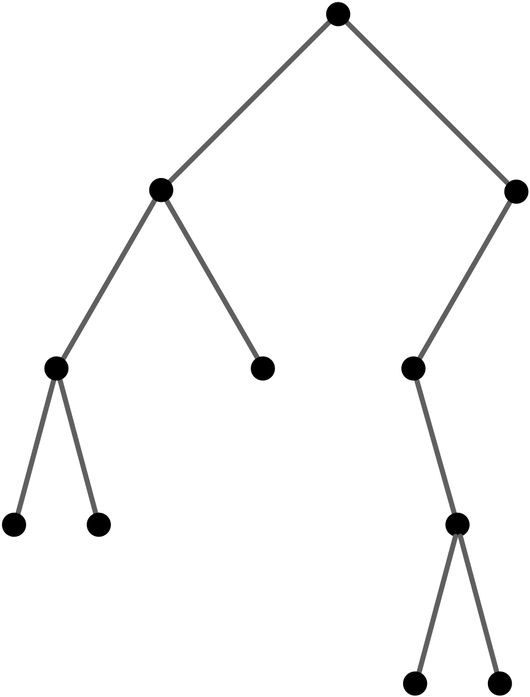A binary tree is a tree in which every node has degree equal to at most 3. This condition forces the tree to have two types of nodes: leaves still have degree 1, while internal nodes must have degree 2 or 3. See the figure below for an example of a binary tree.

Binary trees are perfect for constructing phylogenies because they model the Darwinian vision of species evolution in which each new species is created by branching off from an existing species at a singular moment in history.
Binary trees may be rooted or unrooted; in phylogenetic applications, a root corresponds to the common ancestor of all organisms in the tree. However, the term unrooted binary tree prohibits nodes of degree 2, and a rooted binary tree will allow exactly one internal node of degree 2. Unrooted binary trees are perfect for studying phylogenies when we are uncertain of where exactly the root should be placed.
Because rooted binary trees differ from unrooted binary trees only in the existence of a single node of degree 2, we may view the creation of a rooted binary tree as creating a root along an edge of an unrooted binary tree.